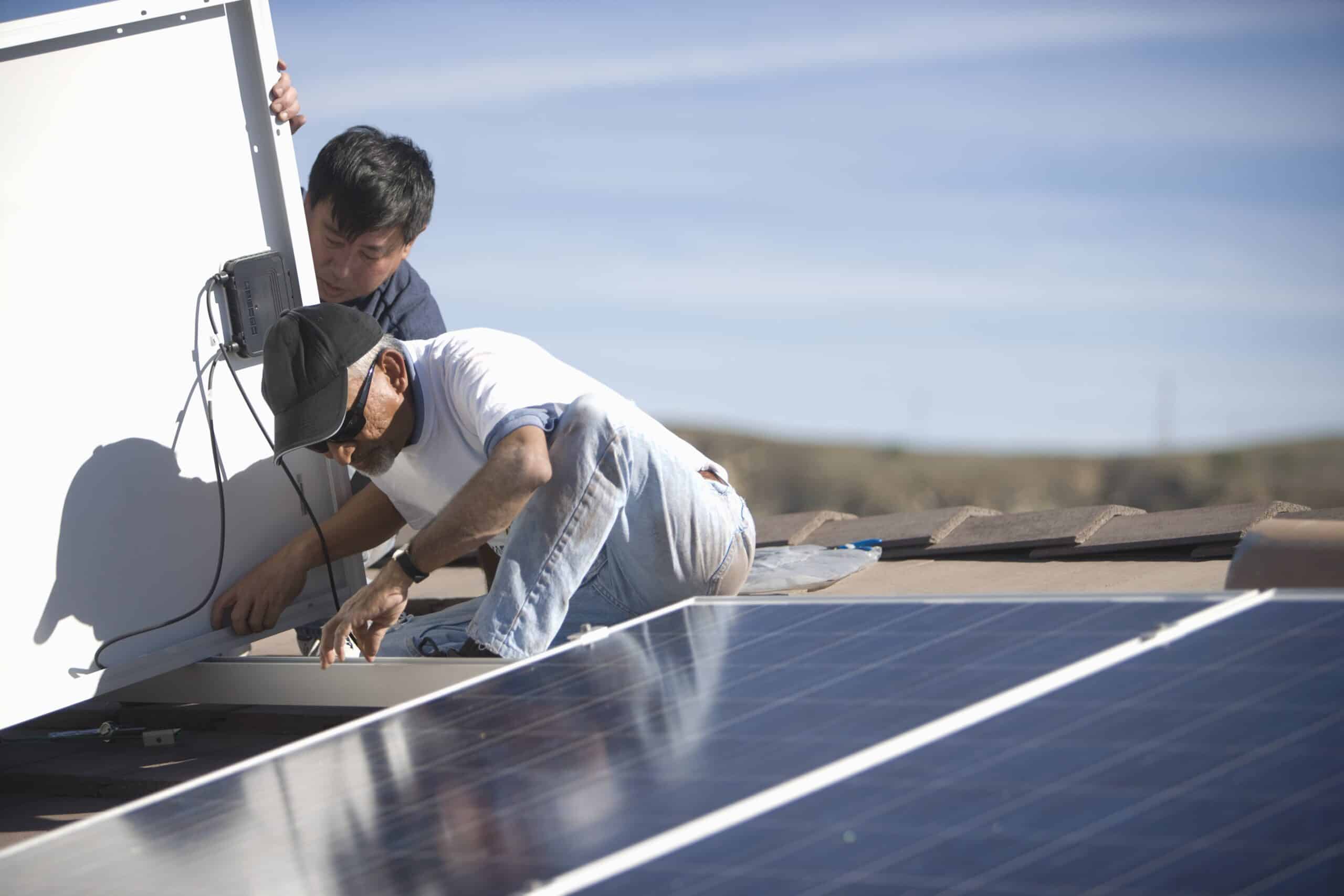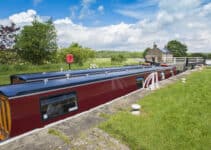Welcome back to Canal Boat UK. Today we are going to discuss electric narrowboats. Is it possible to have an electric narrowboat? More importantly, is it practical? Today we want to provide some information for anyone that might be considering electricity as their main source of propulsion on a narrowboat.
Why the Interest in Electric Narrowboats?
I think that ever since Tesla tore up the expectations of electric road vehicles, this has really helped people consider electric drive trains and propulsion for a wider range of vehicles. If we hadn’t had such a pioneering company such as Tesla, I feel the whole process would have been much slower. Electric vehicles have been around for many years, but Tesla helped make these realistic to use on a day-to-day basis 🙂
Regarding electric vehicles, before Tesla came along some car makers had tried making such things, but they always ended up making lower end vehicles with incredibly poor range. In fact, due to the lack of decent battery technology, the nearest we had to a decent electric car was a hybrid Toyota Prius. Then Tesla blew everything out of the water with electric cars that actually had usable range. They made battery packs like no one had before!
The interest in electric everything was born! It was inevitable that electricity was going to find its way to the marine world sooner or later. In 2015, we had an unsuccessful kickstarter for a full electric outboard motor for a light raft. We now have Torqeedo actually making full electric drive systems for yachts up to 12o feet! A Scandanavian company X-Shore are now making fully electric light speed boats that are fully electric.
Now that the interest in electric-powered vehicles is taking off on the back of Tesla, we even have electric innovations happening in the world of narrowboats…..
Do Electric Narrowboats Exist?
I have to say that I am surprised that such a niche type of boat such as a narrowboat has companies designing electric propulsion specifically for it. The main company right now is Mothership Marine. They have been to the popular Cric boat show to present their electric narrowboat prototype. The roof is pretty much covered in solar panels (that thankfully can be walked on) to help keep your batteries charged whilst you are cruising.

Mothership Marine talk about how they tested this electric narrowboat from May to July 2019, and were able to cruise 500 miles of the UK canal network during this time, anything from the Grand Union to the Tidal River Thames.
Thames Solar Electric are also bursting onto the scene with their own packages to electrify a wide variety of inland boats, including narrowboats. What I like about them is, unlike Mothership Marine, they give you a wide range of options along with full pricing details. They will build out a full electric narrowboat for you or allow you to purchase an electric propulsion system yourself to install on your narrowboat independently.

Fischer Panda are a German company that also offer electric drive systems that would be suitable for narrowbaots. This means you could take any narrowboat of choice from your favourite builder and add the electric motor as an after market option. This makes the world of electric narrowboating very flexible. Although it is certainly not as simple as having everything done under one company’s roof 🙂
So it is clear that electric narrowboats are a real possibility in this day and age. However, are they realistic and usable?
Advantages of Electric Narrowboats
Great for the Summer
Mothership Marine were able to experience some of the perfect conditions during their tests for electric narrowboats. With the Summer sun shining they reported getting infinite range whilst on the River Thames. Meaning the solar panels were providing enough power for the motors to continue forever, providing the conditions remained the same. They also reported only needing between 0.7 and 1kw of power to push them along the Grand Union Canal too. It goes to show that when the conditions are right, the marriage of solar panels to an electric drive system is a match made in heaven.
Cheap to Run
Yes, buying an electric narrowboat does have a larger upfront cost than a regular one, but when it works well the cost to run such a boat is significantly less. When the sun is shining, you are essentially getting free power for your battery bank. Even if you had to charge your boat using shoreline power, you are still getting a better rate than buying diesel.
Quiet
Being able to cruise the canal network in virtual silence must be amazing. I am sure you will surprise a lot of your fellow narrowboaters with your stealth like approach 🙂
Maintenance
When you are dealing with a battery bank and an electric drivetrain, you have far less moving parts than a regular diesel engine. Yes, they can go wrong, but reliability is going to be much less of an issue with an electric drive system.
Disadvantages of Electric Narrowboats.
High Up Front Cost
Depending on the size of the boat, electric propulsion is going to add around another £20-30,000 to the cost of your narrowboat. This is a significant raise in price, although in theory you should easily make more than that back from fuel savings over the lifetime of the boat. It’s that initial layout that may make this option less appealing right now for a lot of narrowboat buyers.
Not Best suited to the UK
Mothership Marine were very careful, I am sure, to make sure they tested their electric narrowboat when the sun was shining. Choosing May until July was a bit of a cop out, in my opinion. They should have weighted this test more fairly by also trying it in the more gloomy months of the year. During these months, you probably can’t rely on your solar panels so heavily. This would have given a more rounded view of what owning an electric narrowboat year round would be like.
Long Term Battery Condition?
This technology is still quite new and the battery banks make up a pretty expensive part of any electric narrowboat. We all know that regular rechargeable batteries start loosing their charge over time, I have seen many of my hi tech mobile phone batteries do just this in just a few years. So what would the future hold for the massive battery pack in your electric narrowboat? Will it have to be reconditioned? If so, how often and how much will it cost? When will this battery pack need to be replaced? These are questions any buyer of an electric narrowboat should have.
Who Will Work on It?
Yes, electric drive systems should be very reliable and not require much work. But what are you going to do when you do have a problem in the middle of nowhere? If you had a regular diesel engine, you could ask any passing narrowboater for help as they have experience with these engines too. But very few people know what to do with an electric narrowboat. You would probably need to call out an engineer that specifically has knowledge of such electrical systems. This will potentially cost you more and take longer than finding a regular mechanic.
Where to Charge?
With electric cars, there is an ever-expanding network of chargers you can use, as well as most people having access to electric in their home base. This makes it easy to keep your car fully charged. A boat is not quite so simple. Yes, if you have a roof full of solar panels, you will be fine in the Summer. But when it becomes gloomy, you will need to charge your pack. If you are regularly in marinas anyway, this should be fine, as you will have easy access to shoreline power. However, if you are a continuous cruiser, there aren’t many (if any) power points along the regular canals.
Most electric narrowboats do come with a standby generator for these very situations. However, I am not sure how hard these can be relied upon during the gloomy months, and from what I can tell they are mainly to back up your domestic power. Can they really charge your whole battery pack? If so, how long would it take and how much fuel would your generator use? These are questions any electric narrowbaot buyer should be asking 🙂
Are Electric Narrowboats Realistic?
After all is said and done, are electric narrowboats realistic at the time of writing? I would say that the technology is not quite there for use in the UK. We don’t get that much sun, so we need to wait until the solar panel technology can better extract power from our gloomy conditions. I am confident that this will happen in time, making electric narrowboats much more viable. If you only cruise in the Summer and stay in marinas the rest of the year, this could be an option for you. But then again, if you are plugged into shoreline most of the year you are not going to feel the benefits of an electric narrowboat as much.
At the time of writing, something that I feel is a real alternative is the hybrid powertrain. This would mean that a diesel engine would be supported by an electric motor and a bigger battery bank. You would be using much less diesel, especially when the sun is shining on your solar panels. However, you still have the ability to run from diesel if all else fails. Until electric motor and solar panel technology improves, this feels like the best option to me. Ortomarine offer such hybrid boats, although you will pay around a £25,000 premium for one over their regular narrowboat offerings.
Electric narrowboats will become the new norm in time, I just feel that the time is not quite yet! What do you think? Let us know in the comments section below 🙂



![What Happened to Cruising The Cut [Narrowboat Youtuber]](https://canalboatuk.com/wp-content/uploads/2022/08/cruising-the-cut-youtube-channel-211x150.png)

The time is ripe for electric narrowboats. I don’t mean half-hearted parallel systems but a direct drive electric motor with solar, shore power and highly silenced efficient diesel generator as ways to charge the batteries.
The CRT can help by working with the power companies to use the waterways to store power by pumping when surplus is produced from solar and wind sources and supply hydro when needed.
With that set up plug in points could be made available and boats even heated using heat pumps to take advantage of water temperatures normally above 5°c
Totally agree. Thanks for your insightful comment 🙂
Would the amount of water that bypasses locks or even the lock sluice themselves be sufficient to provide top up power, obviously the charging points would need to be far enough away from the locks, or an area to pull into to keep clear of craft waiting to use the lock.
Colin W
Just scattering seeds to see what grows
I really like this idea Colin, if someone could harness the power of this water it could really aid the future of electric canal boats!
Getting rid of the stink of diesel would be my best feature! It makes me ill. Then, if holding tanks can be destinked…
Agreed 🙂
Is there an expectation for a `cut-off` date for continued manufacturing of diesel based narrowboats as in the auto industry? Is there any relevant legislation in place to force electric adoption?
Not that i know of, at the moment the government seems focused more on road vehicles for the 2030 ban. CRT have this article that may interest you https://canalrivertrust.org.uk/enjoy-the-waterways/boating/boating-blogs-and-features/boating-team/the-futures-bright-the-futures-green-cleaning-up-boating
I agree. Li-ion battery tech has been the game changer. What the canal network lacks is shore power. I charge my Nissan Leaf car overnight with domestic power. Surely the best start would be to begin installing 13amp sockets at mooring points to make overnight charging possible?
This would be great but I don’t know how long it will take for them to get around to it 🙂
in the 1980’s we hired an eltric powered narrow boat on the mon & brac canal, it had heavy lead acid batteries (suitable also as ballast) and ran fine. the length of waterway (70 miles return) is admittedly little, but we were able to get it charged adequately. a downside was it had a problem with heavy weed growth, slowing the boat considerably, but the experience of cruising almost silently (only the gentle swish of water) was fabulous. anyone know what happed to it?
Interesting article, thanks guys and good to read the comments here.
As a retired baby boomer couple, at the moment we are mulling over selling what was to be our forever home, buy a live aboard canal boat, and head off into the setting son for that last hurrah and yep, going electric has been something we’ve been seriously considering.
Lithium seems to be making great strides over lead acid batteries across the board of late so that is also something to consider?
Agreed. A full electric boat is quite expensive though.
I want to add an electric system alongside my exsisting engine,If there were charge points it would work.I already have over 1300watts of solar but in the winter they wouldn’t create enough power.lithium and electric motor with a controller and a chain drive to the existing gearbox wouldn’t be to difficult to fit,it’s just charging in the winter.
I really hope this gets updated in the future (ie charge points) but not holding out much hope.